You want your kids to be healthy and happy, and sometimes that process can be, well…detailed.
While we can’t guide you and your children through all aspects of growing up (good luck with that homecoming dress shopping), we can certainly make the world of dental health a bit easier to navigate.
It’s important to keep your children’s teeth healthy for more reasons than just a beautiful smile (although that is a pretty great reason!)
Tooth decay is when the protective layer of your child’s tooth gets worn away by bacteria. When left untreated, tooth decay can cause pain and infections.
Tooth decay can also lead to other serious (and expensive) health issues down the line:
- Inability to focus: Pain and irritation can be distracting and impact your child’s ability to complete tasks and pay attention.
- Difficulty speaking: Pain and swelling can impair speech.
- Trouble chewing and eating: When it’s too painful to eat or chew, children will avoid it. This can cause nutritional issues in addition to teeth problems.
- Higher risk of heart disease: When left untreated, bacterial infections can spread from the teeth to the bloodstream and cause plaque in veins and arteries.
Braces can create an added challenge in maintaining your child’s oral health — especially for brushing.
Brushing with braces can take a bit longer than it did before, and as you know, it can be hard to keep a teen’s attention for longer than 2 minutes as it is.
There are also tough to reach places that can be easily overlooked or simply too frustrating to get to right away. Add these factors to the discomfort of braces and you can see how some children fall behind on their dental hygiene once they get them.
In addition to the risk of tooth decay, if your child doesn’t brush properly while wearing braces, they could be at risk of other oral health issues, too:
- Bad breath: Chronic bad breath caused by leftover bacteria
- Decalcification: White spots that outline where the brackets of the braces once were
- Gingivitis: Swollen, painful gums
- Increased tooth sensitivity
So how does a toothbrush get around all those nooks and crannies? It takes a certain technique to brush properly with braces, which we’re happy to share with you and your child!
Follow our step-by-step guide to brushing with braces so your child can enjoy a healthy, white smile when their braces finally come off.

Step 1: Make Sure You Have the Right Tools
Your first defense in the battle against tooth decay is a toothbrush suited to clean around braces.
Food can get stuck all over the brackets and bonding agents in braces. You’ll want to make sure your child has a toothbrush that can work around this equipment to get their teeth clean.
The right toothbrush for braces should have these three qualities:
- Thin bristles that are easy to pull away from the braces: Thick bristles easily get stuck in the brackets and wiring of braces.
- Soft bristles: Braces are uncomfortable as it is. Get a toothbrush that’s gentle on your teeth and gums, which will be especially relieving when the braces are making your child’s teeth sore.
- A smaller head: A toothbrush with a smaller head makes it easier for your child to reach the areas of their teeth and gums that can be easily glanced over, like the back of the molars or around the wiring of their braces.
Your child might also might want to consider switching to an electric toothbrush.
An electric toothbrush is a battery-powered toothbrush with a spinning head. The spinning motion can help brushing become more thorough and efficient — even during those sleepy late-night brushes where your kid might not be quite as focused on technique.
Step 2: Perfect the Technique
While having the right brushing tools is a great start for keeping your child’s braces and teeth clean, they can’t be used to their full potential without the right technique!
The right tooth brushing technique for braces is as simple as it is effective. It’ll have your children’s teeth shining in no time.
These 5 easy steps will make your kiddo the master of keeping their braces clean:
- Start with the gums. Have your child brush where their gums meet their teeth, with their toothbrush slightly angled toward their teeth.
- Now, have them angle their brush down a bit more, and clean the top of each bracket. Repeat on the bottom of each bracket with the brush angled upwards.
- Have your child brush the front and back of each wire.
- Don’t forget to have them get in-between the teeth with the tools mentioned below in Step 4!
Your child should rinse thoroughly and examine their teeth and braces for any food particles that might have been left behind.
Note: You’ll want to set aside 5-7 minutes for each brushing, as cleaning teeth with braces can take around twice as long than without them.
Step 3: Stay Consistent
“I know, I know,” you’re probably saying. “Make sure my kid brushes twice a day!”
But not so fast. Once your child has braces, they’ll need to start brushing their teeth after every meal in order to prevent the buildup of bacteria and food that can cause tooth decay.
Yes, that even means brushing after snacks.
If your child is resistant to brushing their teeth this often, you can do what we do at Premier Orthodontics and make the process so much fun, they’ll almost forget it’s dental hygiene!
They can use this time to listen to their favorite podcast or album. Or you can allow them a bit of screen time with a special video for the duration of their brushing.
You can also offer rewards for sticking to their new (more rigorous) brushing routine. For example, you can create a board where they can put a sticker each time they complete their routine. Once they have 10 stickers, you get to go on a fun family field trip, or they get an exciting prize (ideally not something like candy or other sugary treats that will damage their teeth!)
Part of your consistency should be regular check-ups and orthodontist visits. You should plan on seeing their orthodontist every 6-8 weeks.
Step 4: Use Flossing Tools
There are a few other tools to help in keeping your child’s teeth healthy and sparkling.
Air and water flossers, for example, look like electric toothbrushes. But where the toothbrush head would be, is a tiny little hose.
When you turn on one of these futuristic flossers, pressurized air or water is dispensed, providing a thorough cleaning in all the deepest spaces of your child’s mouth.
Another option is a Proxabrush — a small, triangulated brush on the end of a small handle. It fits perfectly behind your child’s braces’ wires and teeth, and scrubs even the deepest of crevices.
Equip your child with these brushing tools, and they’ll be sending tooth decay on its way!
Other Tips
Brushing with braces will be much easier and more effective if your kids make sure to follow the other methods for clean braces, too.
Here are some ways in which they can make the process easier by preventing food build-up in the first place, as well as any other damage.
- Avoid sweets and sticky foods. These are a fast track to cavities and can stick to brackets — sometimes without your child even noticing.
- Avoid foods that are hard to chew or bite into. This can crack braces and the teeth underneath.
- Avoid food that’s acidic and can wear away at their tooth enamel (the hard outside layer of their tooth) around braces.
- Floss at least once a day.
While maintaining your child’s oral health with braces takes a bit of extra care, it will be worth it once your child’s braces come off and their teeth are straight and bright white!
Chances are, they’ll even take back all the scoffs and eye rolls that they made while you were nudging them into the bathroom to brush their teeth again.
If you or your child have been considering braces but don’t have them yet, congratulations — you’re already ahead of the game by checking out this guide!
Still have some questions about braces? Our orthodontic professionals can answer any other questions you might have with a braces or Invisalign evaluation >

